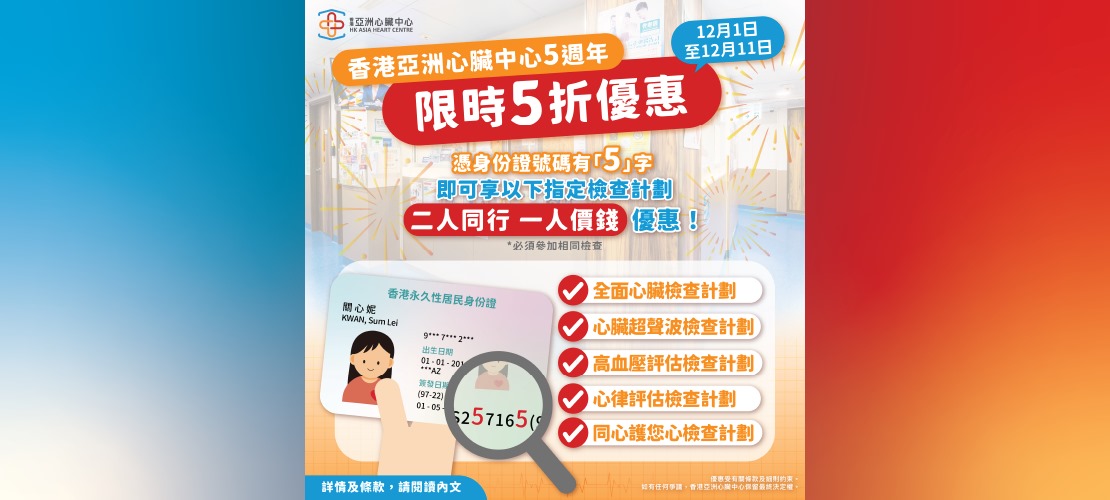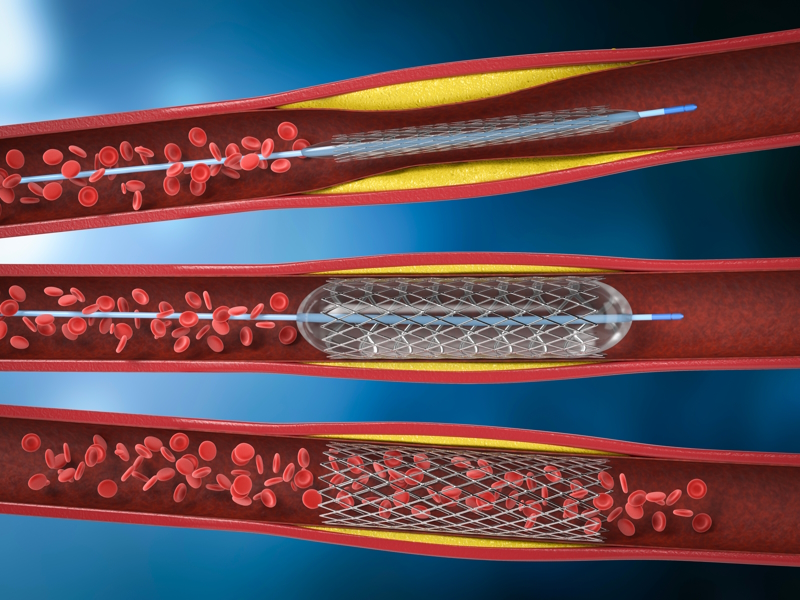Cardiac Catheterization And Percutaneous Coronary Intervention (PCI)
Cardiac Catheterization And Percutaneous Coronary Intervention (PCI) | Hong Kong Asia Heart Centre
Cardiac catheterization is used to investigate the structure and function of the heart. Coronary Angiogram is used to investigate for any narrowing of the coronary arteries (arteries that supply blood to heart muscle). When indicated, percutaneous coronary intervention (PCI) can be performed at the same setting of cardiac catheterization and coronary angiogram.
Cardiac catheterization can provide in-depth and specific information of various cardiac diseases. Coronary angiogram can provide a clear picture of the severity of narrowing of coronary arteries. In general, both are superior to non-invasive procedures and can help doctor make a definite plan of management. In emergency situation caused by acute coronary syndrome (heart attack), the procedure is essential in diagnosis. It is also a stepping stone to coronary intervention, which serves to open up the artery and improve the heart function. This approach, despite its high risk, can be life saving and the consequence can be detrimental if it is delayed.
Proccess (Intervention Demo Video):
- This is an invasive procedure that is generally performed under local anesthesia in the Cardiac Catheterization & Intervention Laboratory (CCIL).
- Electrodes are adhered to the chest to monitor the heart rate and rhythm. Blood oxygen monitor through your fingertip will be set up. Measurement of blood pressure from your arm will be taken during the examination.
- A small wound is made either from the wrist or the groin for access to arteries or veins. Catheters are advanced to the heart under X-ray guidance.
- Pressures within the heart are measured.
- Contrast is injected and films are taken. Narrowing of the coronary arteries is identified.
- In general, a special catheter is placed in a coronary artery with narrowing. A guide wire is passed through the narrowing. The guide wire is used as a track to allow a balloon to go to the narrowing. The balloon is inflated to open up the artery. A stent is then deployed permanently inside the artery to keep it patent.
- Type of Stent : Bare Metal Stent, Drug Eluting Stent(DES), Bio-Resorbable Stent, Partly Resorbable Stent (Bioadaptor)
- During the procedure, you will be asked to hold your breath or cough. Transient chest pain may be experienced during balloon dilatation. If you experience severe or persistent chest pain, dizzy spell or any discomfort, you are required to inform the staff.
- Other techniques may be adopted to improve the success and outcome of the procedures. Please discuss with your doctor the procedure involved as new advance in PCI cannot be fully discussed in this information sheet.
After Surgery:
- Usually you can be discharged 1 day after the procedure.
- The wound will be inspected and covered with light dressing. Please keep the wound site clean and change dressing if wet. In general, showers are allowed after 2 days.
- Please avoid vigorous activities (household or exercise) in the first 7 days after the procedure.
- Bruising around the wound site is common and usually subsides 2-3 weeks later. If you notice any signs of infection, increase in swelling or pain over the wound, please come back to the hospital or visit a nearby Accident and Emergency Department immediately.
Cardiac catheterization is used to investigate the structure and function of the heart. Coronary Angiogram is used to investigate for any narrowing of the coronary arteries (arteries that supply blood to heart muscle). When indicated, percutaneous coronary intervention (PCI) can be performed at the same setting of cardiac catheterization and coronary angiogram.
Cardiac catheterization can provide in-depth and specific information of various cardiac diseases. Coronary angiogram can provide a clear picture of the severity of narrowing of coronary arteries. In general, both are superior to non-invasive procedures and can help doctor make a definite plan of management. In emergency situation caused by acute coronary syndrome (heart attack), the procedure is essential in diagnosis. It is also a stepping stone to coronary intervention, which serves to open up the artery and improve the heart function. This approach, despite its high risk, can be life saving and the consequence can be detrimental if it is delayed.
Proccess (Intervention Demo Video):
- This is an invasive procedure that is generally performed under local anesthesia in the Cardiac Catheterization & Intervention Laboratory (CCIL).
- Electrodes are adhered to the chest to monitor the heart rate and rhythm. Blood oxygen monitor through your fingertip will be set up. Measurement of blood pressure from your arm will be taken during the examination.
- A small wound is made either from the wrist or the groin for access to arteries or veins. Catheters are advanced to the heart under X-ray guidance.
- Pressures within the heart are measured.
- Contrast is injected and films are taken. Narrowing of the coronary arteries is identified.
- In general, a special catheter is placed in a coronary artery with narrowing. A guide wire is passed through the narrowing. The guide wire is used as a track to allow a balloon to go to the narrowing. The balloon is inflated to open up the artery. A stent is then deployed permanently inside the artery to keep it patent.
- Type of Stent : Bare Metal Stent, Drug Eluting Stent(DES), Bio-Resorbable Stent, Partly Resorbable Stent (Bioadaptor)
- During the procedure, you will be asked to hold your breath or cough. Transient chest pain may be experienced during balloon dilatation. If you experience severe or persistent chest pain, dizzy spell or any discomfort, you are required to inform the staff.
- Other techniques may be adopted to improve the success and outcome of the procedures. Please discuss with your doctor the procedure involved as new advance in PCI cannot be fully discussed in this information sheet.
After Surgery:
- Usually you can be discharged 1 day after the procedure.
- The wound will be inspected and covered with light dressing. Please keep the wound site clean and change dressing if wet. In general, showers are allowed after 2 days.
- Please avoid vigorous activities (household or exercise) in the first 7 days after the procedure.
- Bruising around the wound site is common and usually subsides 2-3 weeks later. If you notice any signs of infection, increase in swelling or pain over the wound, please come back to the hospital or visit a nearby Accident and Emergency Department immediately.
Share


